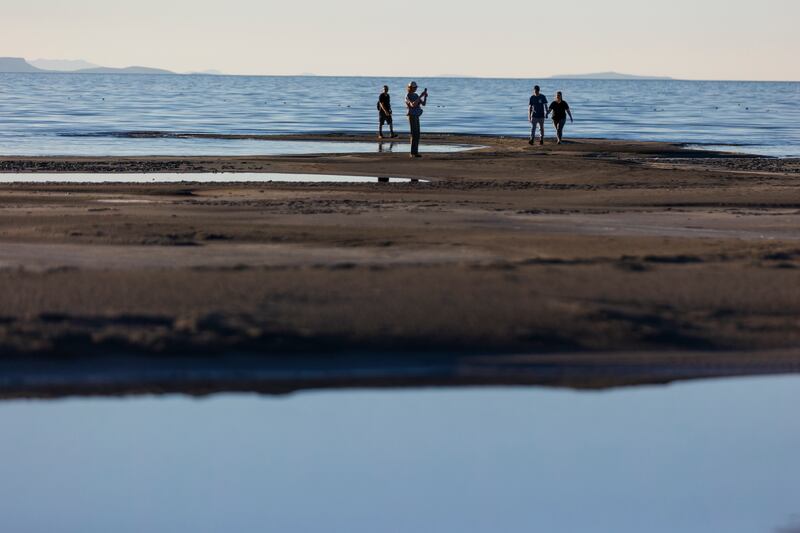During my daily drive home this summer, I came to appreciate the beauty of a brown lawn. I can’t say they look better than green grass, but a parched lawn is a symbol of a community that realizes the challenge we face and is increasingly willing to do what it takes to make every drop count.
Just a year ago, few Utahns gave much thought to the condition of the Great Salt Lake and calls to curb water use were ignored by too many. By contrast, today there is a broad consensus that a shrinking lake poses a real threat to our health and our economy and, more and more, conserving water is the cool thing to do.
Without continued effort, a drying Great Salt Lake threatens our environment and our economy. An absence of lake-effect snow will diminish snow pack by 27-45 inches, further stressing a drought-strained water supply that must provide the life blood of a growing population, a thriving economy and local agriculture. Even the dry lakebed itself presents a health crisis for the entire Wasatch Front, as large hot spots of toxic chemical dust are exposed and carried across our most populous counties.
Utahns are doing what residents of our great state have always done best, meeting challenges with innovation, organization and a good old-fashioned willingness to work for the common good. This year alone, Utahns conserved 9 billion gallons or 28,000 acre feet — that’s half the size of Rockport Reservoir. It’s an encouraging trend and one we need to continue as the drought persists.
As policymakers, we are also determined to learn from the successes and mistakes of those who have faced similar challenges — from the cautionary tales of California’s mismanagement of Owens Lake to the successful water policies of nations like Israel. These case studies have helped shape smart policy to match our newfound resolve.
As we have worked to address challenges in the Great Salt Lake over the last year, I have begun to see the lake as a symbol of a broader, systematic problem with the way we manage our water in the state.
During the 2022 legislative session, state leadership passed legislation that addresses important facets of our water problem. The Legislature provided incentives for drought resistant landscaping and agricultural conservation and optimization. We abolished antiquated “use it or lose it” systems in favor of voluntary, free-market conservation efforts. The Legislature appropriated funds to assess the quality and quantity of available water resources, and passed legislation to push revenue that comes from the Great Salt Lake, back into the Lake. The Legislature also created the Water Trust, providing $40 million to increase flows to the Great Salt Lake, shore up watersheds and obtain water rights.
While good legislation is an important part of the solution, we also need to strengthen ties and communication between change makers at every level. On Oct. 13, I hosted the second annual Great Salt Lake Summit, bringing together our brightest minds and top experts in search of solutions for better water management generally, and actionable ideas for reviving our dying Lake. To ensure this was a “do something” summit, I announced my intent to run legislation to establish a statewide, nonprofit, public-private partnership, Utah Water Ways, to create next-level public education, programming and policy discussions about Utah’s water supply.
Utah Water Ways will provide impactful tools to help Utahns understand why we need to conserve and how to become conscious water consumers. The partnership will strengthen the connection between water providers and their local users allowing us to leverage the experience of a broad range of stakeholders including state and local government agencies, water suppliers, agriculture, business and environmental advocacy groups.
In addressing policy, Utah Water Ways will establish a direct line of communication between stakeholders and state leaders, informing legislative decisions and representing the varied interests of all parties. Utah Water Ways is focused on the idea that it will take each of us and all of us to reverse the tide of our water crisis.
Our lawns have definitely looked better, but the spirit of cooperation among Utahns is more vibrant than ever. Our success requires more than a momentary interest, it will require sustained effort and real commitment as we reimagine and rebuild an efficient, drought resistant water management system for our beautiful state.
Brad Wilson is the speaker of the Utah House of Representatives.

